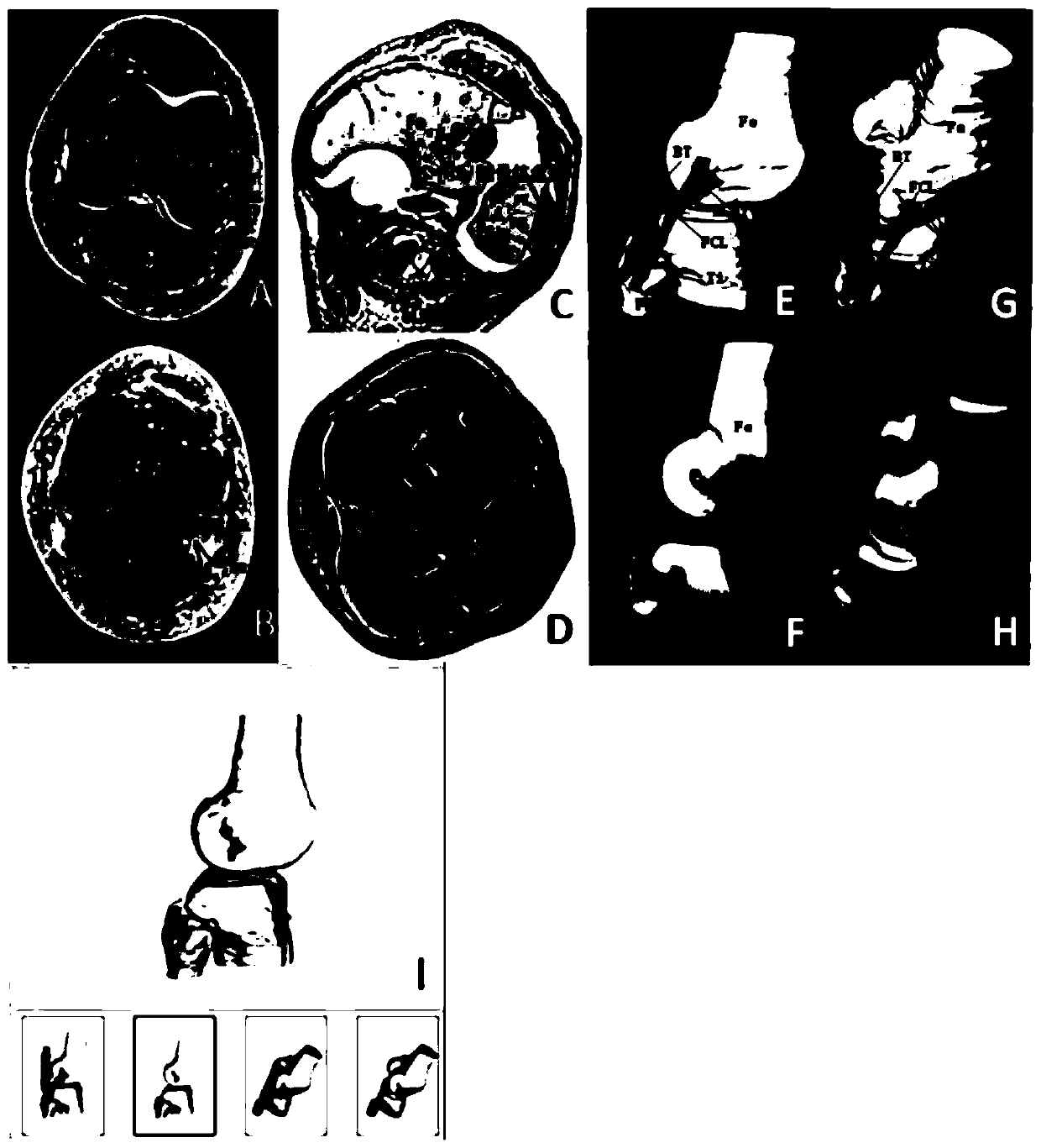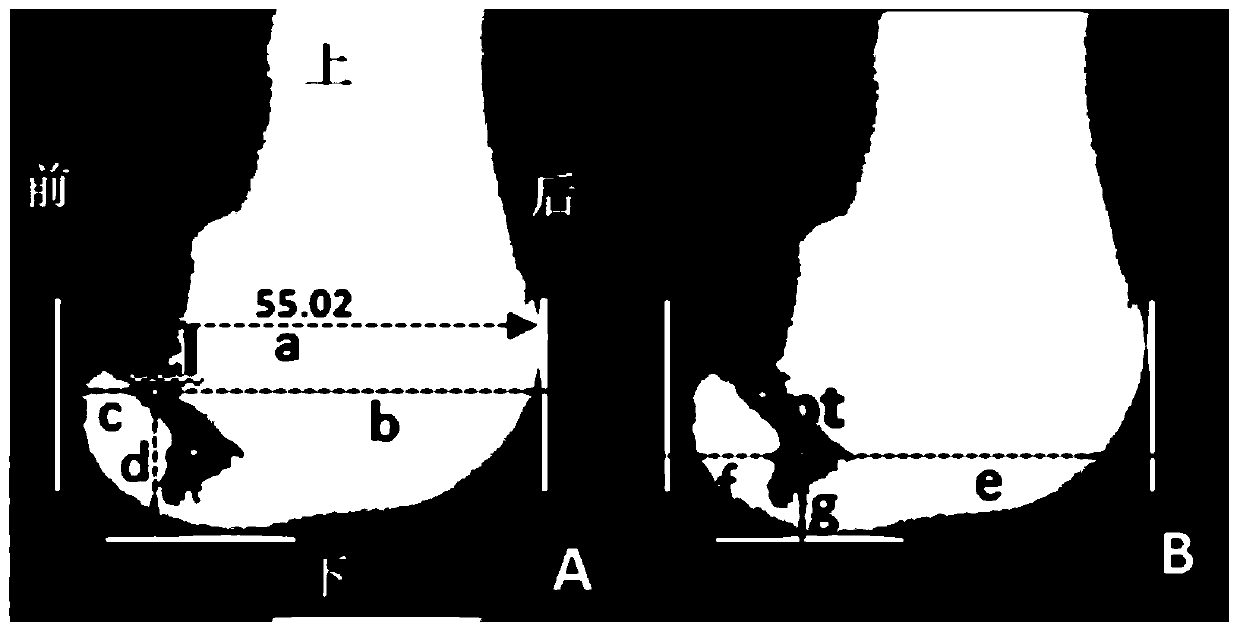Morphological recognition and visualization method for tendon-bone joint part of knee joint posterior-lateral complex
A technology of the tendon-bone junction and knee joint, applied in the research field of the posterolateral side of the human knee joint, can solve the problem that the anatomical position of the tendon-bone junction cannot be accurately identified, anatomical observation, calculation, measurement and research are impossible, and PLC repair surgery tunnels are affected And other issues
- Summary
- Abstract
- Description
- Claims
- Application Information
AI Technical Summary
Problems solved by technology
Method used
Image
Examples
Embodiment Construction
[0039] The following will clearly and completely describe the technical solutions in the embodiments of the present invention with reference to the accompanying drawings in the embodiments of the present invention. Obviously, the described embodiments are only part of the embodiments of the present invention, not all of them. Based on the embodiments of the present invention, all other embodiments obtained by persons of ordinary skill in the art without making creative efforts belong to the protection scope of the present invention.
[0040] The anatomical position of the tendon-bone junction of the PLC is identified and calculated based on the Chinese Visual Human Dataset (CVH dataset). The identification and measurement of these attachment points are of great significance for the anatomical observation and research of the posterolateral knee structure. Understand the anatomical position, three-dimensional shape and adjacent relationship of the main structure of PLC, and provi...
PUM
 Login to View More
Login to View More Abstract
Description
Claims
Application Information
 Login to View More
Login to View More - R&D
- Intellectual Property
- Life Sciences
- Materials
- Tech Scout
- Unparalleled Data Quality
- Higher Quality Content
- 60% Fewer Hallucinations
Browse by: Latest US Patents, China's latest patents, Technical Efficacy Thesaurus, Application Domain, Technology Topic, Popular Technical Reports.
© 2025 PatSnap. All rights reserved.Legal|Privacy policy|Modern Slavery Act Transparency Statement|Sitemap|About US| Contact US: help@patsnap.com



